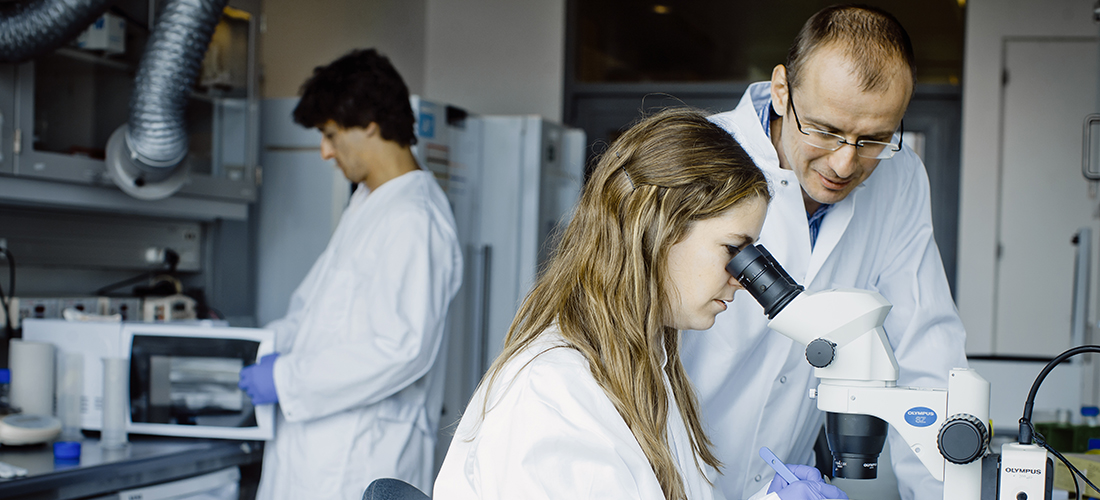BRIC celebrates Brain awareness week
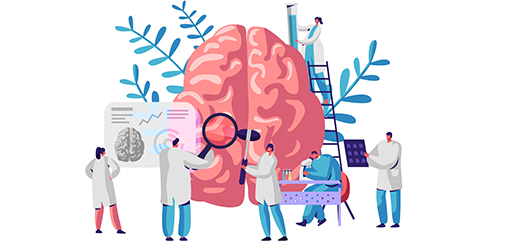
Brain Awareness Week is an annual global campaign to foster public enthusiasm and support for brain science.
BAW 2024 - Our researchers share their enthusiasm for the brain and neuro science
What is unique, interesting or even beautiful about the brain? Five researchers from BRIC give their perspectives on this in order to share the enthusiasm for the brain and neuro science that drive them everyday in their research.
Day 5: Konstantin Khodosevich, Professor and group leader at BRIC
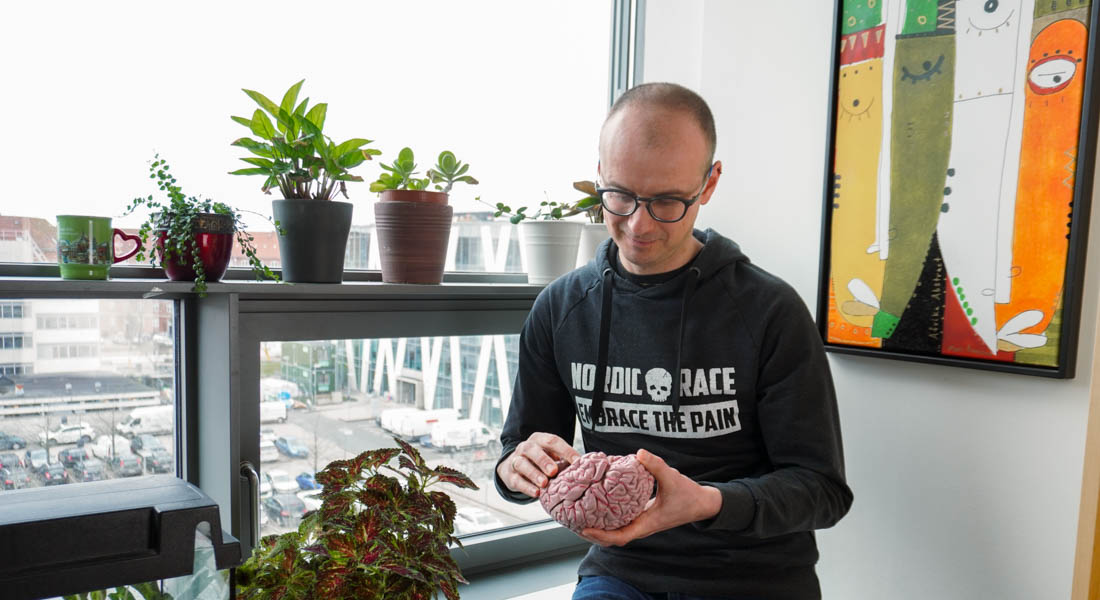 “The brain controls everything. Connections between neurons in the brain are flexible, connections can appear and disappear, and such flexibility allows us to learn, to memorize and to forget things. And yet the brain is created from only a few cells.” - Konstantin Khodosevich, Professor and group leader at BRIC.
“The brain controls everything. Connections between neurons in the brain are flexible, connections can appear and disappear, and such flexibility allows us to learn, to memorize and to forget things. And yet the brain is created from only a few cells.” - Konstantin Khodosevich, Professor and group leader at BRIC.
It is brainawarenessweek, and to honor research in the brain and neurobiology we share our enthusiasm on the brain and on brain science.
By studying the development of the brain, Professor Konstantin Khodosevic seeks to find a way to prevent disorders of brain development such as schizophrenia.
“I am interested in how the brain is built. It is fascinating how such a complex structure can be generated in a very precise matter: How stem cells at a certain stage multiply in a very timely manner, how they generate waves of neurons that migrate precisely to various brain areas in the certain developmental order. This is so complex.
By studying how the brain is developed from a pathological perspective, we try to understand how psychiatric disorders are triggered during development of the brain.
Imagine if our research helps preventing disorders such as schizophrenia, we will help millions of patients worldwide.”
During Brain Awareness Week five researchers from BRIC will share their enthusiasm on the brain.
Day 4: Nathalia Cardozo Da Conceicao, PhD-fellow at BRIC
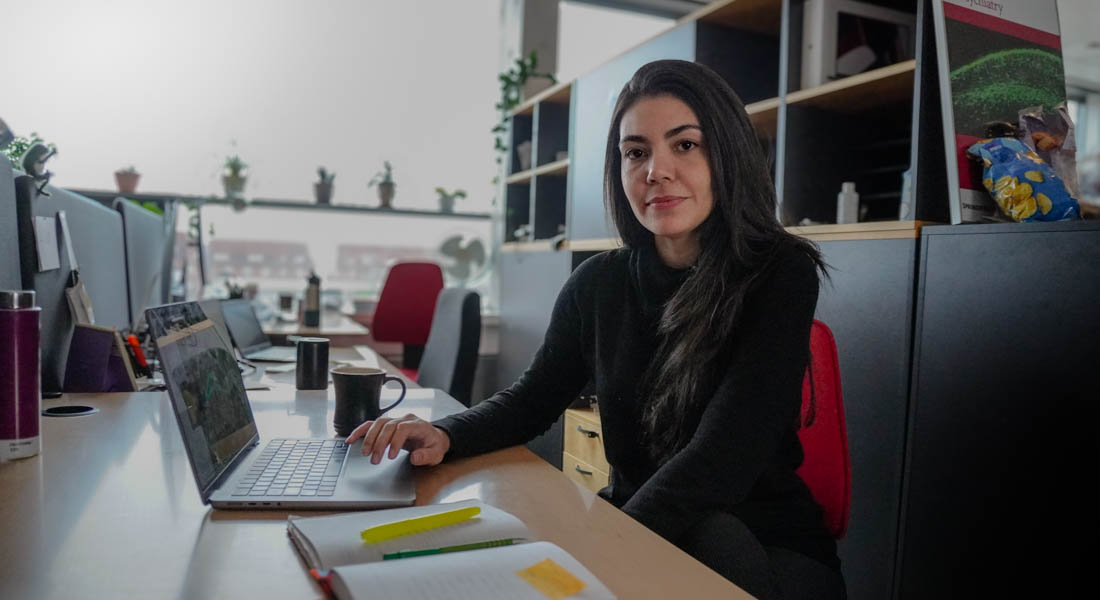
“I got into neuroscience to find answers for my patients. Now, as a scientist I realize the questions to ask are even more complex.” - Nathalia Cardozo Da Conceicao, PhD-fellow at BRIC.
Nathalia Cardozo Da Conceicao has crossed the line from being a medical doctor and psychiatrist to be a PhD Fellow at BRIC in Khodosevich group. By bridging the gap between clinic and research, she hopes to bring knowledge back to clinical practice and make an even bigger difference for patients than before.
“When I was working as a psychiatrist, patients often asked many questions on the reasons behind the disorders. I wanted to answer their questions, but there is still a lot that has not yet been discovered in psychiatry.
Now, I work looking for clues on the mechanisms of psychiatric disorders and I ask even more complex questions. As a scientist you must be curious, work to understand and ultimately make a treatment.
I got into psychiatry to help patients. As a scientist I can help on a bigger scale by bridging the knowledge between clinic and science.”
Day 3: Zala Zebec, PhD at BRIC
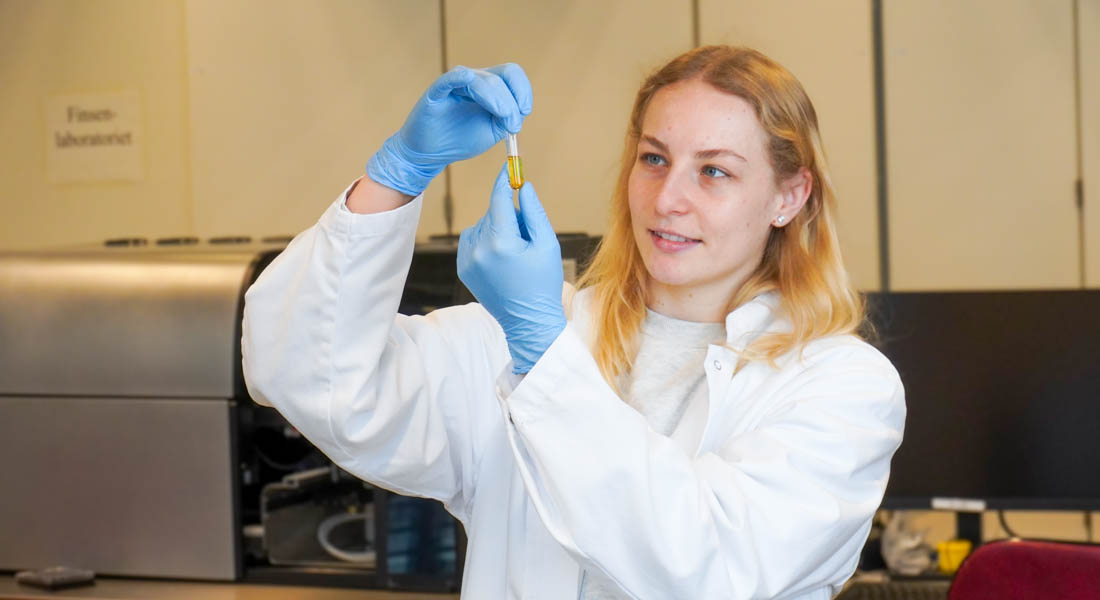
“It is a real adrenaline rush when things suddenly make sense and everything that was hidden and faded is now clear” – Zala Zebec, PhD at BRIC.
Meet Zala Zebec. She is doing her PhD in neuroimmunology in Issazadeh-Navikas group at BRIC. Zala is driven by her curiosity about the complexity of the brain at the molecular level and how even the smallest discovery might benefit a patient in the long run.
“I always try to think about the patient, even though I do basic research in neuroimmunology, which is often far from the clinic. So, whenever I'm doing experiments, although they're often not directly related to patients at all I still try to think that maybe if I can figure out how this super specific signaling pathway works, then it might in the long run help a Parkinsons patient who is currently only getting drugs for symptomatic relief.
I might uncover just a small piece of the puzzle, like one phosphorylation site or one tiny, seemingly, super meaningless thing in the whole range of the world, but in my mind, it's so nice to finally understand the interaction at the molecular level. And this tiny uncovering might lead to the next piece being revealed -and then in 30, 40 or 50 years all the pieces of the puzzle might come together.”
Day 2: Edda Santello, postgraduate at BRIC
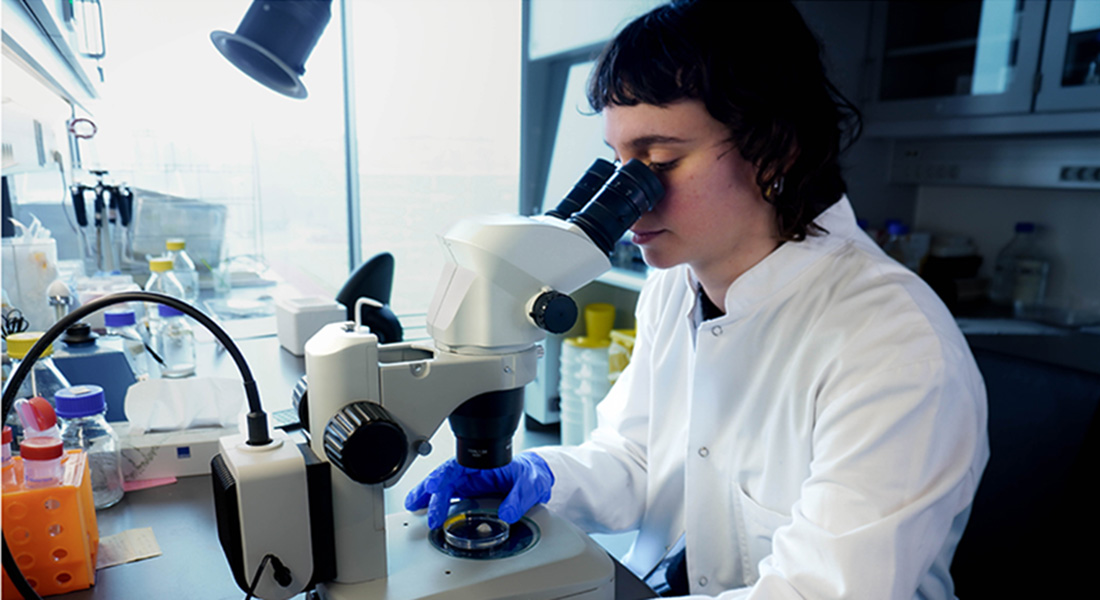
“One question drives me every day in my research. It has followed me since I was in middle school, and it still does in the lab. It is “how can simple neurons create these big and complicated outcomes?” – Edda Santello, postgraduate at BRIC.
Meet Edda Santello. She does research for her master’s thesis on neurodevelopmental diseases such as schizophrenia in Khodosevich group at BRIC. In her opinion the brain is extraordinary due to its’ ability to create our mind from neurons.
“That question is what fascinates me about the brain. It is more than just biology: We can observe how it is controlled by chemical substances and electronic signals, but together it makes up something more. It is our thoughts, our cognition, and our mind.
Today, I understand how a cell works and I know how they form networks in the brain, but to fully comprehend how these cells are able to do such complicated things is what pushes me into this field every day.
Neurobiology is a new field. We know a lot, but there is still so much to be discovered. This makes the brain even more interesting, and my hope is that I will make my own contribution to this field.”
During Brain Awareness Week five researchers from BRIC will share their enthusiasm on the brain. Stay posted tomorrow where Zala Zebec, PhD Fellow at BRIC, explains how she sees the importance of basic research in neuroimmunology.
Day 1: Meet Jariwala, postdoc at BRIC
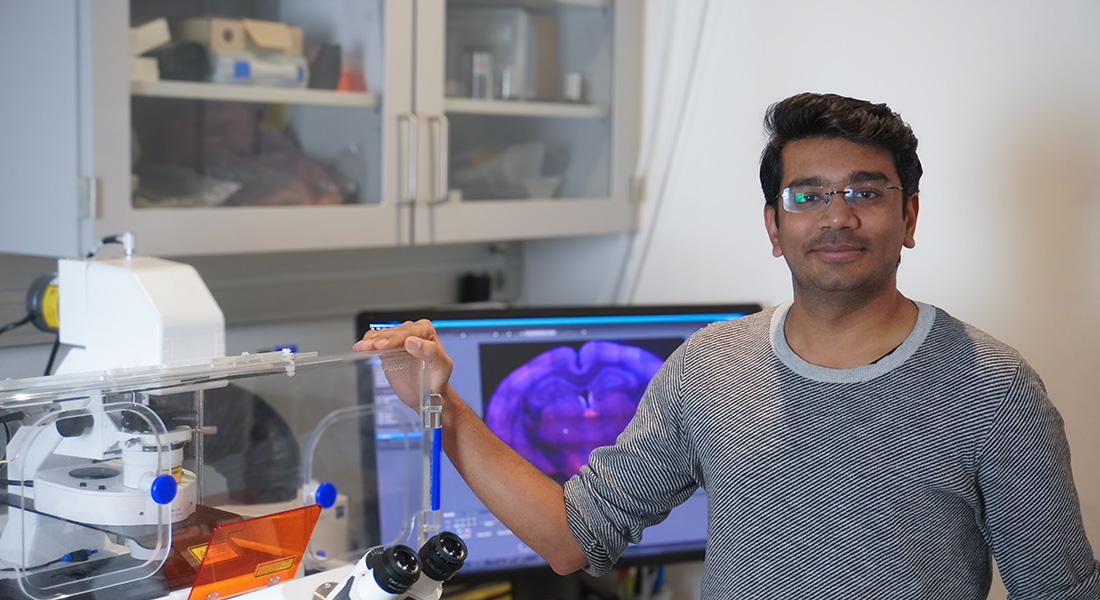
“When I looked at the brain for the first time in the microscope, this organ which was covered with blood was turned into something really beautiful: Neuronal fibers were connected to each other in a synchrony and the neurons were majestic," says Meet Jariwala, who is a postdoc at BRIC conducting research in the field of neuropsychiatry .
When Meet was just a young school student in the seventh grade, he became deeply fascinated by the uniqueness and beauty of neurons – a fascination he still has today, working in the lab.
“I was quite nervous the first time. My biology teacher in seventh grade brought a goat brain to the class for educational purposes, and coming from a family of vegetarians, I never saw an organ exposed this way before.
However, then I looked at the brain through the microscope and suddenly it occurred to me how beautiful the brain looks in a more abstract way. Seeing this, you could say that the microscope turned my nervousness into curiosity.
A curiosity I still have today as a postdoc when I look in the microscope and try to question how neurons contribute to psychiatric health and behavior.
They are such a unique part of our body. No other cells have this structure. This fascination still drives my research and makes me want to enlarge the knowledge base of addressing a psychiatric disorder.”
During Brain Awareness Week five researchers from BRIC will share their enthusiasm on the brain. Stay posted tomorrow where Edda Santello shares her fascination of the brain and the mind.
BAW 2023 - High School experiment and inspiration article about mitophagy and neuro disease
This year, we would like to use the occasion to promote our SRP inspiration workshop, available for Danish High School Students who are writing their SRP assignment in Biotechnology or Biology. In 2023 and 2024 the subject of our SRP experiment is "Mitophagy - keeping brain cells clean and healthy". We have gathered a few highlights from the 2023 event in a short video.
Furthermore, BRIC researcher Joana Marturià Navarro & Senior communications officer Anne Rahbek-Damm has written a short inspiration article on Mitophagy and Parkinson´s Disease for high school students and teachers with an interest in neuro disease. Read the article here (in Danish) "MITOKONDRIER, MITOFAGI OG
PARKINSONS SYGDOM"
BAW 2022 - Escape room at BRIC
On 15 march 2022, during the brain awareness week, BRIC scientists locked up 30 high-school students within the research centre – to escape, the students had to find a (fictional) cure for Parkinson’s disease.
For the students from Roskilde high school to find their way out of the escape room, and find the fictional cure for Parkinson’s disease, they had to go through some of the steps from basic research to innovation, within the field of neuroscience.
“It means a lot for our students to come visit and experience how basic neuroscience is conducted, and for them to use their theoretical knowledge in relation to the real world, in a nice environment and supported by talented instructors. It means a lot”, says Ida Thingstrup, teacher at Roskilde high school.
Main developers of the concept, Navneet A Vasistha (assistant professor in Khodosevich group) and Emilie Tresse-Gommeaux (Assistant professor in Issazadeh-Navikas group) initially got the escape room idea from BRIC outreach coordinator Anne Rahbek-Damm. The final concept was then developed with a focus on introducing the field of neuroscience in a fun way.
“We felt it would be good to introduce school students to how translational research is done by making them go through the steps. Also, combining elements of game-based learning with neuroscience would make it both interesting and informative”, says Navneet A Vasistha.
To this, Emilie adds: “I really liked this escape room idea as it is just not what you anticipate when you think biology in high school. The design was the result of great team work and, while the game is really fun, the contents are still extremely accurate scientifically”.
In the first two rooms, imitating fundamental neuroscience and patient trials, the participants were introduced to the basics of neurological circuits, measuring and recording brain impulses, and comparing microscopy slides of a healthy and disordered brain, from a real BRIC experiment. In this introduction to basic brain antinomy, the students observed the effect from different drugs injected into the brains of mice – looking at which were most effective at resurrecting the damaged brain cells seen in Parkinson’s disease.
For the last two rooms, moving towards translational research and clinical innovation, participants observed animal behavior in mice - from a real BRIC experiment - to compare a healthy and diseased mouse to see how a genetic defect, in for instance Parkinson’s disease, might cause movement abnormalities. Further, the participants were presented with “raw data” on potential drugs tested to improve motor ability for Parkinson’s patients, where they lastly had to conclude which drug would be best to take forward to the clinic.
The event was designed and organized by Khodosevich group and Issazadeh-Navikas group, and funded by the Federation of European Neuroscience Society.
BAW 2021
In 2021 the Brain Awareness Week takes place from March 15-21.
BRIC celebrated the week by posting videos, news and events related to neuro science throughout the week.
Today, we mark the beginning of the week with a new video from Khodosevich group on brain development and neuro disease.
It is day 2 of Brain Awareness Week 2021 and today we look back at the highlights of the past year within the field of neuro- and brain cancer research. Despite the difficult circumstances of the lockdown, some fantastic scientific results have been made!
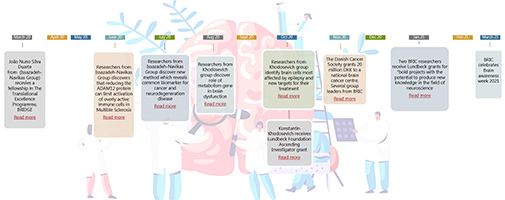
It's video time again! This video is made by the BRIC outreach initiative "Science for Children" and explains how our brain controls movements, and how this can be impaired and cause disease.
The Science4Children programme is an initiative started by young researchers at BRIC. The aim of the programme is to contribute to the quality of biology teaching in primary schools and is targeted for children aged 7-11 in Danish international schools. It is designed to implement inquiry-based learning which stimulates a scientific way of thinking in pupils, while maintaining the fun.
For several years the initiative has collaborated with Rygaards International School and has carried out teaching at the school as well as lab-based-workshops at BRIC. The video “The Right Moves” has been produced as alternative to on-site-teaching due to the COVID- lockdown.
Research centre BRIC at the University of Copenhagen offers 4 summer internships for ambitious high school students with an interest in neuro science.
Are you a high school student with biotechnology or biology at A or B level? Have you just completed 2.G and would you be interested in spending part of your summer at an international research center at the University of Copenhagen? Do you want to take part in real research projects, learn about brain development and neuro disease and get an insight into the everyday life of a university researcher? Then, you should apply for a summer internship in the Khodosevich group!
Single-cell technology is a powerful tool to study the cellular composition of tissues. It is especially useful to investigate the highly heterogenic cell types of the brain and how they are affected in disease condition.
In 2016 Khodosevich and Pers groups from the UCPH BRIC and Novo Nordisk Foundation Center for Basic Metabolic Research, founded the Danish Single Cell Network to expand the knowledge and use of the new and promising single-cell sequencing technology. The network kicked off in January 2017 with a monthly seminar series consisting of progress reports, technology updates, keynote and industry speakers. Now, five years later, the Danish Single-Cell Network has more than 200 members, representing academic labs in all major Danish Universities (University of Copenhagen, Aarhus University, University of Southern Denmark, Danish Technical University, Aalborg University) and industrial partners. Today, the network launches a new website as part of their strategy to further expand the technology in Denmark and internationally. We asked the founders of the network group to answer a few questions about the network.
Visit the Danish Single Cell Network Website here


